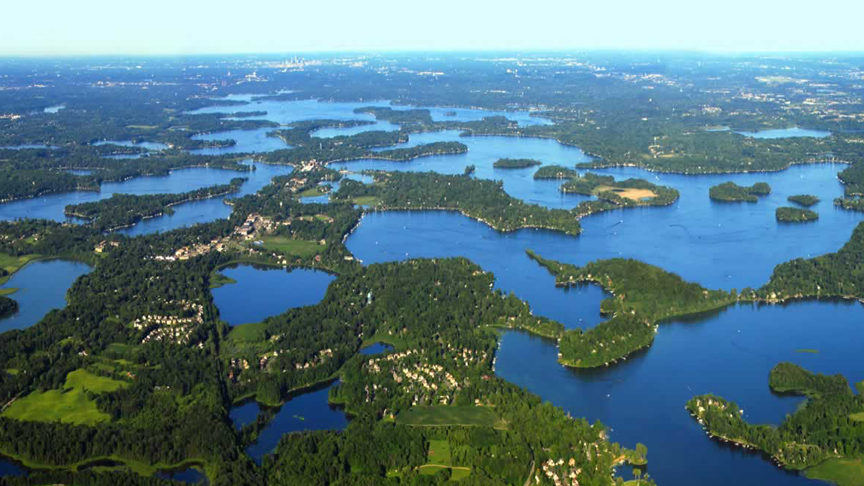Lake Minnetonka
At more than 14,000 acres in size, Lake Minnetonka is the largest lake in the Twin Cities metropolitan area. It is a system of basins with a range of fertility, bottom types, and depths, and is the source of Minnehaha Creek.
Minnetonka’s size and location make it very popular for year-round recreation, so demands on its aquatic resources are varied and great.
This vast, interconnected system has a large, diverse fish community. A high-quality largemouth bass population draws multiple tournaments every year. Sunfish and crappies provide year-round fishing. A noteworthy muskie fishery has been established from stockings started in the late 1970s. Northern pike and walleye are predator-fish mainstays.
Anglers face challenges related to heavy boat traffic and – at popular times for water recreation – over-crowded boat ramps).
Several unwanted exotic species are established. Be sure to take the proper measures so undesired organisms aren’t spread to or from Lake Minnetonka. It’s the law.
DNR Fisheries have been monitoring Lake Minnetonka fish populations since 1949. From 1997-2012, we made annual gillnet surveys to better examine changes in walleye, northern pike and yellow perch populations. Present sampling occurs in even-numbered years. Management includes plans for muskie and walleye stocking every other year – walleye in even-numbered years, muskie in odd-numbered years, with adjustments in cases when the scheduled numbers and ages are not available when scheduled.
Bowfishing for rough fish is allowed under certain conditions and in certain locations. An agreement among jurisdictions resulted in lakewide rules coordinated through the Lake Minnetonka Conservation District; a summary is found in their rules and regulations.

